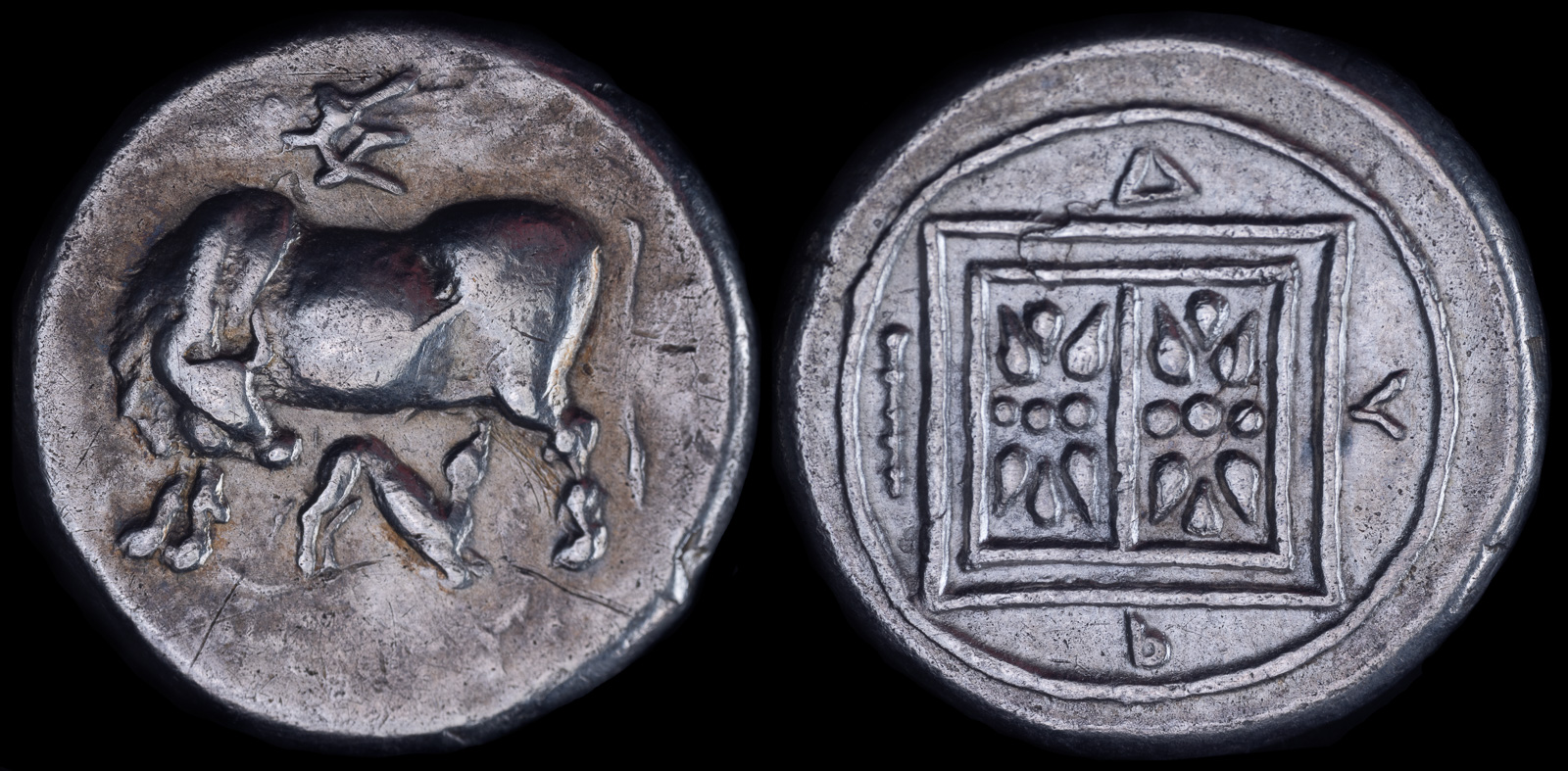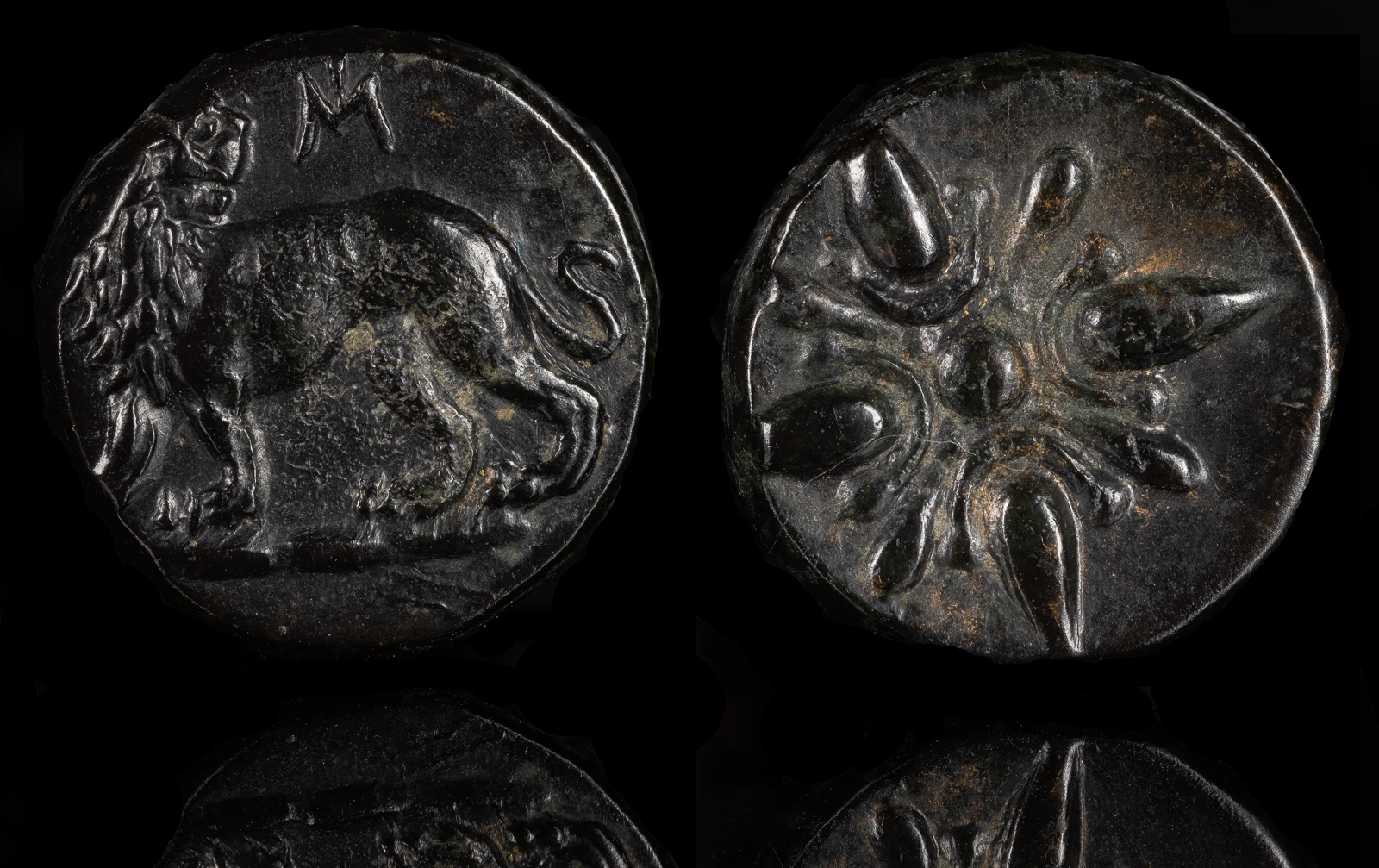Stellate Pattern
View All Tags
In many cases, the stellate pattern was used to symbolize celestial or divine significance, reflecting the Greeks’ reverence for the gods and the cosmos. The pattern could represent goddesses associated with the heavens or the night, such as Selene (the Moon goddess) or Artemis (associated with the moon and hunting). It was also employed as a representation of astrological bodies or to invoke a sense of celestial order, perhaps implying that the god or city represented on the coin had divine favor or a connection to the celestial realm.
The stellate pattern was often found on the reverse side of coins, sometimes combined with other symbols that conveyed divine or civic significance. For example, coins of the city of Byzantium often feature a star, symbolizing the city’s link to the celestial realm or to its patron deities. Additionally, the pattern could be seen on coins featuring Helios, the sun god, emphasizing his solar connection or marking his dominance over the heavens. In these instances, the stellate pattern may have been used as a shorthand for divine radiance, signifying the gods’ presence and influence on the material world.

Kingdom of Illyria, Monounios
Dyrrhachion
Circa 305-275 BCE
AR stater 21mm 10.57g 5h
Obv: cow standing left, looking back at suckling calf standing right below; monogram above.
Rev: double stellate pattern divided by line, all in double linear square border; ΔYP (P retrograde) and club around; all within linear circle border.
Paškvan-; Maier 34 var. (same); Meadows, CH (forthcoming) 193; SNG Copenhagen-425 var. (orientation of obv.); BMC-29 var. (same).
ex Classical Numismatic Group 2015

IONIA. Miletos
Circa 350-325 BCE
Bronze, 11 mm, 2.38 g
Lion standing left, looking back; above, monogram of Miletos. Rev. Stellate pattern. Deppert-Lippitz 297-303. Weber 6041
Ex J. Metzger Collection
Ex Nomos